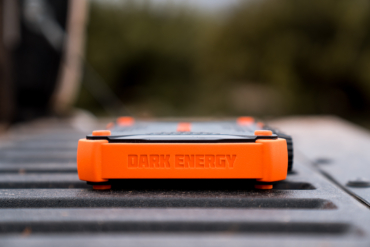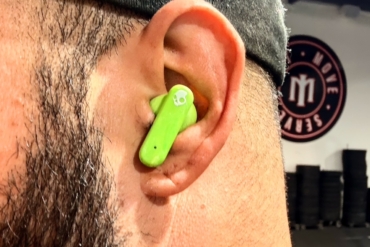[leadin]Batteries are a vexing thing. At their simplest, they are like tissues — useful and disposable. But if you want to squeeze out every bit of performance from a flashlight, you need to understand a bit more about these magical, portable power cells.[/leadin]

We know batteries by their conventional names — AAA, AA, D, and C cells. But there is a range of other types you should know, including CR2, CR123a, and 18650.
The first two of that triplet are “camera” batteries, though most cameras now use proprietary cells. The last,18650, is a rechargeable-only cell about 150% the size of a AA and thicker.
Read below to learn some important details about batteries, and keep in mind these five key points:
1) Rechargeable Batteries for EDC
For regular use lights and everyday carry, get rechargeables. They save money over the long term and offer performance benefits. This includes flashlights, headlamps, and even bike lights.
2) Lithium for Long-Term
For storage or packed lights use lithiums. They have the lowest self-discharge rate of any chemistry. Good ones are usable even after years of storage.
3) Keep Common
Avoid lights with esoteric batteries for EDC use. Modern emitters get great performance out of AA and AAA cells, which are cheaper and easier to replace.
4) Emergency Rations
Have one light that runs on unusual batteries for emergencies. In crises, common cells go quickly at stores while CR123a and other less common types are usually still in stock.
5) Name Brands
Try to get name-brand batteries. Surefire, Energizer, Duracell, Rayovac, or Panasonic. Most everything else is suspect and usually a rebranded cheap cell.
A GUIDE: HOW TO CHOOSE A FLASHLIGHT BATTERY
Volts & Millamps
There are two numbers associated with batteries that are important — volts and millamps per hour, or V and maH, respectively. Volts, to simplify the comparison, is a measure of a battery’s bandwidth, basically how much power it can discharge at a time (electrical engineers hold your fingers in abeyance, I know it is more complex than that). The maH term is a measurement of the total amount of energy stored in a cell.
For a flashlight, you want high discharge rates (3.7V-4.2V) and lots of maH (more than 1500). These things aren’t necessarily easy to find on common cell boxes, but you can find them if you need to. Most alkalines are 1.5V. Most camera batteries are 3.0V. Rechargeables are necessary to get those really high numbers.
Primary & Rechargeable Batteries
Over time, if you really want to see what the latest lighting tech can do you will migrate to having a variety of cells: primaries (non-rechargeables) and rechargeables.
Rechargeables work better in two scenarios — ultrahigh performance lights and regular carry/use lights. Because these lights get used on a regular basis, you can simply charge up the batteries and save money. Rechargeables also have better specs, allowing lights to have much higher lumen counts and longer runtimes.
Some rechargeable cells, lithiums mostly, can cause fires/explosions when overcharged, but in years of using them this has never happened to me. Finally, you can find a greater variety of batteries in rechargeable cells — from super small 10880s to mega cells.

Primaries have an advantage for storage: Rechargeables all “leak” power over time, called self-discharge, and they cannot be stored on a shelf in case of a power outage. In those scenarios, it’s best to have primaries on hand. Many of the better brands of primaries have ultra-low self-discharge and some chemistries can remain at 90% power for up to five years.
Note that all of the common cell formats have rechargeable equivalents, all with numeric names.
Battery Chemistry
There are four main chemistries — alkaline and lithium for primary cells, and NiMH and Li-ion for rechargeables. Not every light can run on every chemistry. Many lights can run on the first three, but the higher voltage on Li-ion batteries can tax circuits and emitters, making them the least common chemistry used. There are some emerging chemistries out there, like lithium-polymer rechargeables, and even fewer lights can use those.
It used to be that high-end lights used lithium cells exclusively, but this no longer the case. Many companies have pushed emitter technology to the point where regular alkaline batteries provide plenty of punch. In particular, Zebralight makes excellent illumination tools that use alkaline batteries.
That said, lithium cells, like the CR123a and the CR2, still offer better performance for size compared to alkalines.
If you want the absolute pinnacle in performance, however, you need to look at different chemistry rechargeable cells. Here you get cells that offer more storage capacity and higher “bandwidth.” In particular, RCR123as, 18350, and 18650 cells are very good and offer excellent performance over a long lifespan.
NiHM batteries are good general-purpose cells, as they offer low self-discharge and a high number of recharge cycles, but if you want bleeding-edge performance, then lithium-ions are required.
Conclusions
Emitter tech is at the point where you can get by in 99% of circumstances with a single-cell AAA or AA light. For regular carry that is what I use.
I like a light that can take both primaries and rechargeables. For my main EDC light, a Peak Eiger, I have primaries, one pair of NiMHs, and one pair of Li-Ion batteries.
That sounds like a lot, but it’s about $10 worth of batteries if you buy online. Always buy batteries over the internet, unless it’s Black Friday, the absolute best day to buy a big box of alkalines.
If you want good NiHMs look no further than Eneloops. They are the most complete system and best reviewed rechargeables on the market. For li-ions I like Ultrafire, though here label swaps make it hard to follow manufacturers over brands.

Diversity is key if you plan on having a few lights for regular and emergency use. In that case I’d want one little light that can run on any kind of cell, one headlamp that runs on primaries, one lantern that runs on primaries, and one big light that runs on rechargeables.
Remember, batteries are the power plant of any portable lighting system. Know your power source to get the most out of your light.










